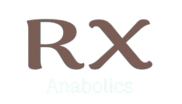Buy Anabolic Peptides Online
Showing 1–24 of 45 results
-
Buy injectable Steroids Online
DHB (Dihydroboldenone)
$90.99 – $109.99 Select options This product has multiple variants. The options may be chosen on the product page -
Buy injectable Steroids Online
Equipoise
$65.50 – $104.99 Select options This product has multiple variants. The options may be chosen on the product page -
Buy Anabolic Peptides Online
HCG 5000
Original price was: $90.00.$65.00Current price is: $65.00. Add to cart
























